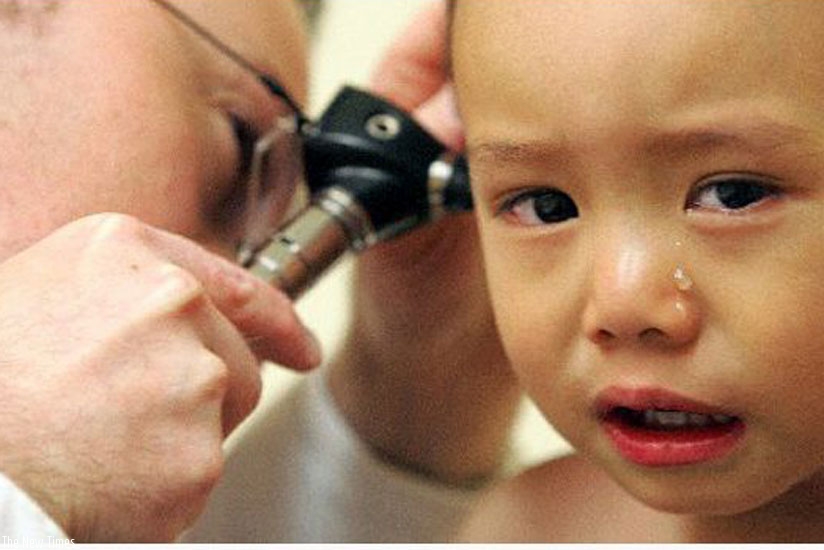The ear is one of the most valuable assets of any human being. But due to ignorance and carelessness of most people, the ear is usually exposed to chronic infections.


The ear is one of the most valuable assets of any human being. But due to ignorance and carelessness of most people, the ear is usually exposed to chronic infections.
An ear infection occurs when a bacterial or viral infection affects the middle ear — the sections of your ear just behind the eardrum. Ear infections can be painful because of inflammation and fluids that build up in the middle ear.
Ear infections can be chronic or acute. Acute ear infections are painful but short in duration. Chronic ear infections do not clear up, they recur many times. Chronic ear infections can cause permanent damage to the middle and inner ear, medics say.
"These infections occur most commonly in young children because they have short and narrow eustachian tubes. Infants who are bottle-fed also have a higher incidence of ear infections than their breastfed counterparts. Other factors that increase the risk of developing an ear infection are altitude, climate changes and exposure to cigarette smoke among others,” says Florence Mukashema, a physician with Dama Clinic, Remera.
She lists mild pain or discomfort inside the ear, hearing loss, persistent pressure-like feeling inside the ear and pus-like ear drainage as some of the symptoms of an infection.
Mukashema adds that these symptoms might persist or come and go.
Diagnosis
One’s healthcare provider will examine their ears with an instrument called an otoscope that has a light and magnifying lens. And examination may reveal; redness, air bubbles, or pus-like fluid inside the middle ear, fluid draining from the middle ear, a perforation in the eardrum, a bulging or collapsed eardrum.
If one’s infection is advanced, their doctor may take a sample of the fluid inside the ear and test it to determine whether certain types of antibiotic resistant bacteria are present. They (the doctor) may also order a computed tomography (CT) scan of your head to determine if the infection has spread beyond the middle ear. Finally, you may need a hearing test, especially if you are suffering from chronic ear infections.
Treatment
"Adequate course of a suitable antibiotic in form of tablets or local ear drops helps in healing of the infection. Chronic and resistant infections need surgical intervention,” says Dr Rachna Pande, a specialist in internal medicine at Ruhengeri Hospital.
She adds that one can prevent developing chronic ear infections, by not having the ear pricked in any way, keeping it dry, protected from cold and hot air, as this reduces chances of inflammation and infection of the middle ear.
Steam inhalation done regularly is useful in curing symptoms of common cold. It also helps in preventing inflammation and congestion of the ear internally.
If a baby is bottle fed, he should not be kept supine with head flat on the bed as this tends to cause ear infections.
"On experiencing any itching or pain with or without discharge in the ear, it is wise to consult and take adequate treatment before development of chronic infection,” Dr. Rachna advises.
Statistics
The Ministry of Health estimates that about 1 million people countrywide have hearing impairment.
A study carried out by the Rwanda Otolaryngology Head and Neck Surgery Society (ROHNSS) in various primary schools in 2008 in Kigali, shows that 18 per cent of those screened had accumulated ear wax, and 13.3 per cent had hearing impairment.
According to Bridget Kyomugisha, a nurse with the University teaching hospital of Kigali (CHUK), ear care consultation and treatment, at her hospital ranges from Rwf14,500 to 150,000.
According to the World Health Organisation, 360 million people worldwide have hearing impairment.


